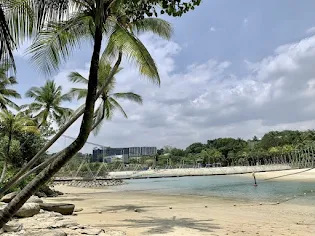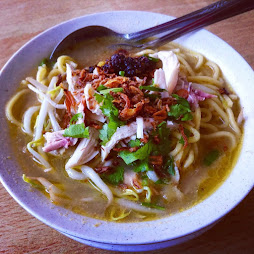Snapshot data and figures
A snapshot of facts and figures of the city:
Land area (in December 2020): 728.3 sq. km (281 sq. miles)Singapore is located between latitudes 1°09’N and 1°29’ N and longitudes 103°36’ E and 104°25’ E. The main island of Singapore is about 49km from east to west and 28km from north to south with a coastline of 217km.
Total population (as at end June 2020): 5.69 million
Resident population: 4.04 million
Singapore citizens: 3.52 million
Singapore permanent residents: 521,000
Population density: 7,810/ sq. km
Median age: 41.5
Demographics:
Race proportion (June 2019): Chinese (76%), Malay (15%), Indian (7.5%), Others (1.5%)
Religion (in 2015): Buddhism/ Taoism (43.2%), Christianity (18.8%), Islam (14%), Hinduism (5%), Other religion (0.6%), no religion (18.5%)
Household types:
Average household size in 2020: 3.22 persons
Home ownership rate in 2019: 90.4%
Resident household by type of dwelling in 2020: HDB (78.7%), Private apartments/ condominiums (16%), landed properties (5%), other types (0.3%). HDB stands for Housing and Development Board, a public housing authority in Singapore.
Breakdown of HDB's dwellings (in 2020): 1 and 2 rooms flat (6.5%), 3 rooms flat (17.7%), 4 rooms flat (31.6%), 5 rooms and executive flats (22.9%)
Nearly 1 in 3 households live in a 4-room HDB flat, making it the most common type of house in 2015.
GDP and economy:
Gross domestic product (GDP) in 2020: $469.1 billion
Per Capita GDP: $82,503
Structure of economy in 2020 by Goods and Services:
Manufacturing (21.5%), Wholesale trade (16.8%), finance and insurance (15.7%), professional services (5.9%), transportation and storage (5.4%), information and communications (5.1%), administrative and support services (4.5%), ownership of dwellings (4.3%), real estate (3%), construction (2.7%), utilities (1.3%), other services industries (10.8%)
Almost 70% of the nominal GDP is generated by the services industries while 25% is generated by goods and producing industries.
Singapore's top 6 trading partners in 2018 for services trade are the US, EU27, Japan, Mainland China, Australia and Hong Kong.
Water supply in Singapore:
 |
| Oldest reservoir, MacRitchie Reservoir |
- Water from local catchment. Total no. of reservoirs is 17. Two-third (2/3) of Singapore land is a water catchment. What it means is that rainwater that falls in these areas is collected through a network of drains, canals and rivers and channeled to the 17 reservoirs. The oldest reservoir in Singapore is MacRitchie Reservoir.
- Imported water, from Malaysia (till 2061). Singapore imports water from Johor under the 1962 Water Agreement, which allows Singapore to draw up to 250 million gallons of water a day from the Johor River until 2061.
- Reclaimed water, known as NEWater, which is expected to cover more than half of city's water need by 2060. The used/ sewage water goes through several water treatment processes including microfiltration, reverse osmosis and ultraviolet disinfection to produce clean drinking water. A small amount of raw water from the reservoirs are added before undergoing treatment. And during dry periods, NEWater is added is added to the reservoirs.
- Desalinated water (there are 4 desalination plants, one more will be added in 2021). By 2060 desalinated water from sea will comprise up to 30% of Singapore water needs.
The 17 reservoirs in Singapore are: Bedok Reservoir, Marina Reservoir, Pandan Reservoir, Jurong Lake, Tengah Reservoir, Poyan Reservoir, Murai Reservoir, Sarimbun Reservoir, Kranji Reservoir, Upper Seletar Reservoir, Lower Seletar Reservoir, Upper Peirce Reservoir, Lower Peirce Reservoir, MacRitchie Reservoir, Punggol Reservoir, Serangoon Reservoir, Fort Canning Reservoir.
Climate in Singapore in 2020:
24-hr mean relative humidity: 78.1%
Air temperature mean daily maximum is 31.7 deg. Celsius (89.06 deg. Fahrenheit)
Air temperature mean daily minimum is 25.5 deg. Celsius (77.9 deg. Fahrenheit).
Compare this to 1975, where:
24-hr mean relative humidity is 86.9%
Air temperature mean daily maximum is 30.4 deg. Celsius (86.72 deg. Fahrenheit)
Air temperature mean daily minimum is 23.3 deg. Celsius (73.94 deg. Fahrenheit)
So, in 45 years the air temperature here has risen by 1.3 deg. Celsius. But the relative humidity has decreased by 8.8%. Another increase of 1.5 degrees Celsius can be catastrophic to global warming. It will then be too hot to walk outside.
Other geographic info:
 |
| Southernmost Point of Continental Asia at Sentosa |
There are no mountains in Singapore, though there are places here named after mountains such as Mount Imbiah which is located at Sentosa Island), Mount Faber, Mount Sophia, Mount Pleasant, Mount Vernon and Mount Emily :). Mount Faber, being the second highest peak is 106m (358 ft.) high.
And the Southernmost Point of Continental Asia is believed to be somewhere near Palawan Beach at Sentosa Island.
Air Transport
Total Aircraft Arrivals and Departures (include commercial and cargo flights): 382,342 (2019) / 125,424 (2020)
Total Passengers (include arrival, departing and transit): 68,282,840 (2019) / 11,765,963 (2020)
Sea Transport
Total Cargo ('000 Tonnes): 626,521.2 (2019) / 590,738.3 (2020)
Reference: Singapore Department of Statistics and PUB



Comments
Post a Comment